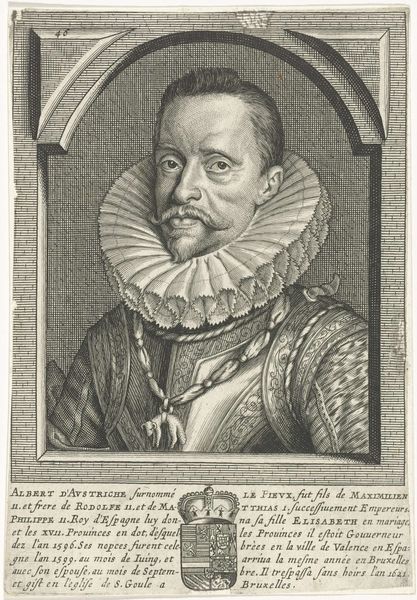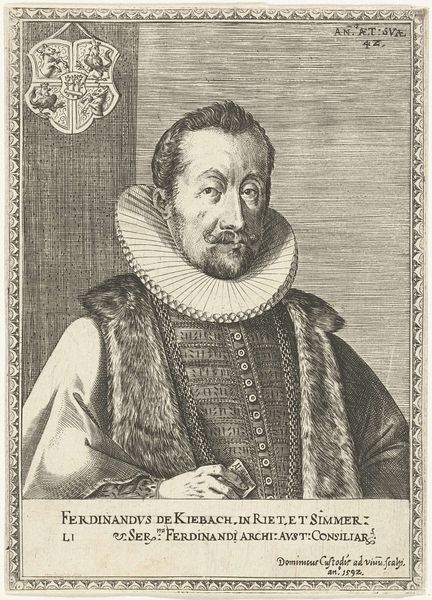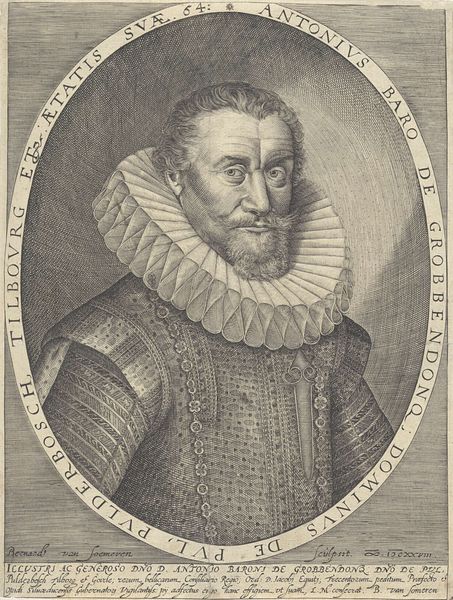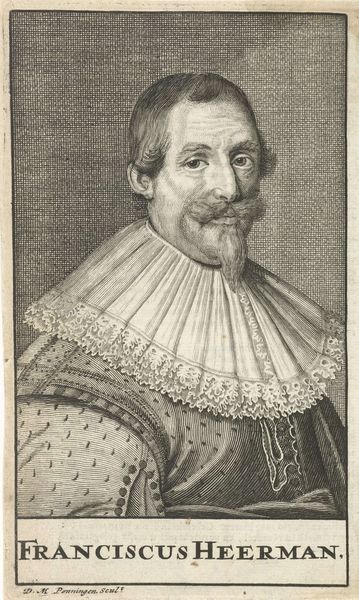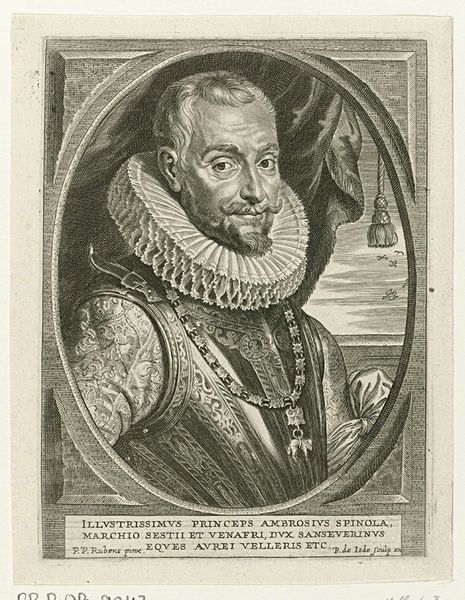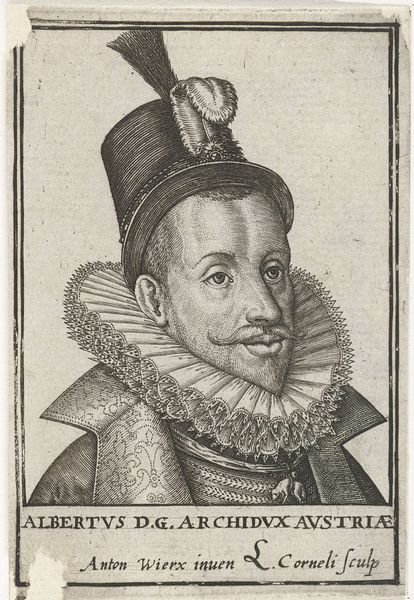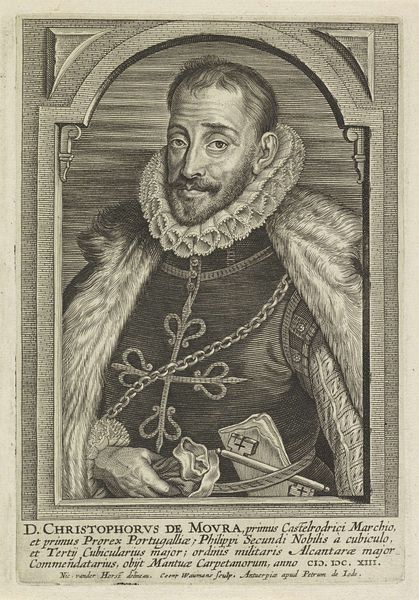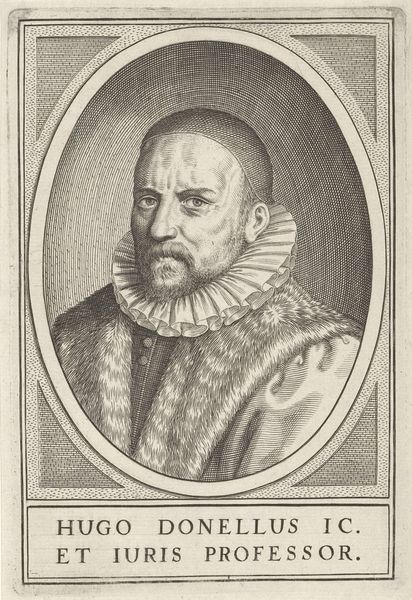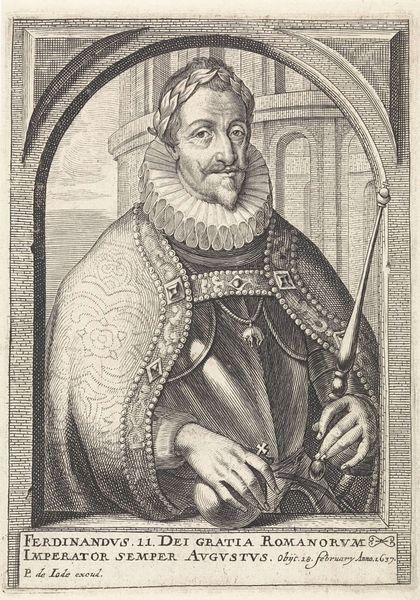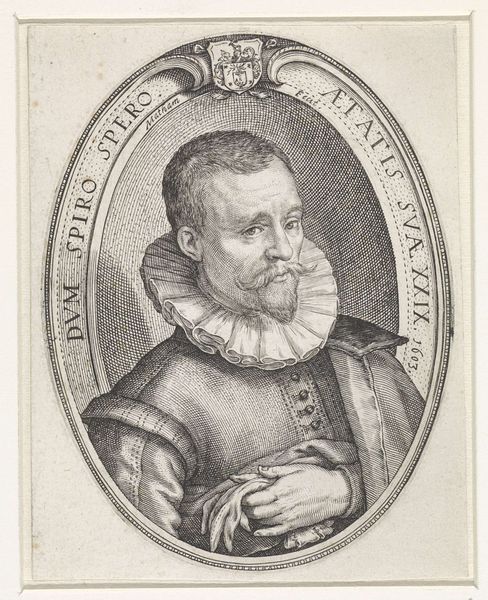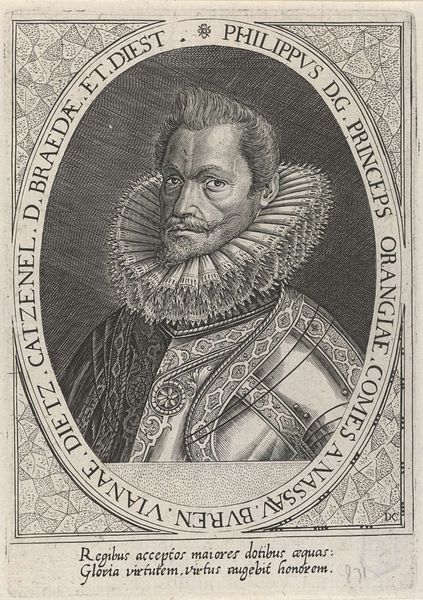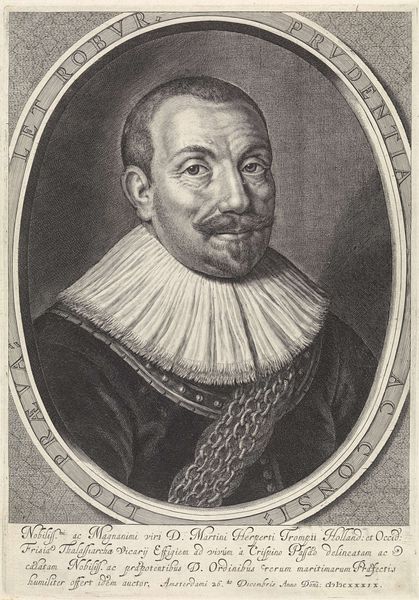
print, engraving
#
portrait
#
facial expression drawing
#
baroque
# print
#
old engraving style
#
caricature
#
figuration
#
portrait reference
#
line
#
portrait drawing
#
history-painting
#
engraving
Dimensions: height 405 mm, width 295 mm
Copyright: Rijks Museum: Open Domain
Editor: This engraving, dating from somewhere between 1612 and 1650, presents a "Portret van Albrecht van Oostenrijk," attributed to Johannes Eillarts. It's quite striking, isn’t it? The fine lines create such intricate detail, but it has this rather serious almost rigid feeling about it. Curator: Indeed. The composition hinges upon a carefully orchestrated interplay of lines. Note how Eillarts employed hatching and cross-hatching to define the volumes and textures, primarily focusing on the sitters’ garments, with an intensity mirrored in the details of the face itself. Editor: The attire is almost overwhelming. The ruff collar is an immediate focal point; one almost feels it has its own agency, separating the head from the rest of the figure. What might that suggest about Albrecht’s status and identity in its era? Curator: Symbolically, that prominent collar isolates and elevates the face – it demarcates intellect and nobility. Beyond this, his clothing also emphasizes geometric patterns with meticulous precision that enhances a regal presentation, but also constricts it in a calculated fashion. Editor: Yes, I am fascinated how historical costume always conveys such messages! I can almost read an ambivalent power dynamic into that tension, the clothing acting as both armor and ornate signifier. I can imagine it representing how leadership was perceived at the time. Curator: Notice further the careful management of tonal variation through subtle shifts in linework density. The visual strategy here isn't to create illusions of depth, per se, but rather to evoke symbolic weight, prestige. It isn’t simply representing Albrecht van Oostenrijk, but his formal importance. Editor: Seeing the work dissected this way helps appreciate how technique shapes reception. The medium carries such gravity and decorum, and informs the character. Curator: Absolutely, that Baroque-era tendency toward decorative surfaces and formal poses communicated particular virtues. Eillarts leveraged engravings to transform mere visual depiction into potent proclamations of authority and grace. Editor: I'm now struck less by its rigidity, but its controlled intensity – like Albrecht's personality itself as seen by his contemporaries and posterity. Curator: Precisely. What begins as a formal study ultimately provides a very calculated message, designed for specific audiences in very particular ways.
Comments
No comments
Be the first to comment and join the conversation on the ultimate creative platform.
